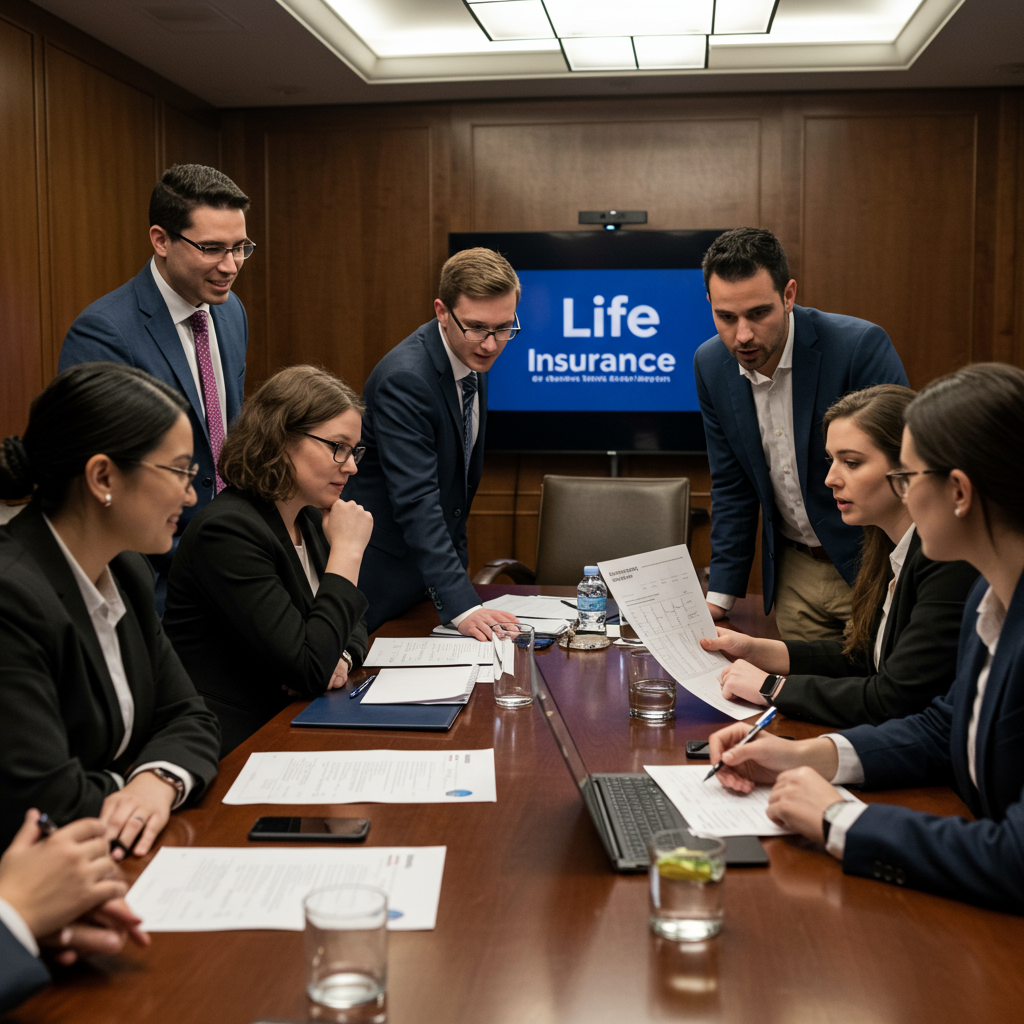The Cost of Life Insurance for Older Adults:
What You Need to Know
When we talk about life insurance, the conversation often centers around young families building their financial safety net. But what about older adults? Is life insurance still a wise investment as you age? And if so, what can you expect to pay?
The simple answer is yes, life insurance can still be incredibly valuable for older adults, but the cost factors and types of policies often look different than they do for younger individuals. While premiums typically increase with age, the peace of mind and financial support it offers can be just as crucial, if not more so, in your later years.
Let's explore the factors that influence the cost of life insurance for older adults and the types of coverage that might fit your unique needs.
Why Life Insurance Costs More as You Age

It's no secret that life insurance premiums tend to rise with age. This is because, from an insurer's perspective, the risk of paying out a death benefit increases as you get older. Here are the primary factors:
Age: This is the biggest factor. For every year you age, the cost of life insurance generally increases. While the percentage varies, it can be a significant jump, especially once you're past your 50s and 60s. The younger you are when you secure a policy, the lower your locked-in rate will be.
Health & Medical History: Your current health, past medical conditions, and family health history play a huge role. If you have chronic conditions (like high blood pressure, diabetes, or heart disease), or a history of serious illnesses, your premiums will likely be higher. Some policies might require a medical exam, while others are "simplified issue" or "guaranteed issue" (more on these below) and rely less on your health status, often at a higher cost.
Lifestyle: Factors like smoking, excessive alcohol consumption, and even certain high-risk hobbies can lead to higher premiums.
Coverage Amount: Naturally, the more coverage (death benefit) you want, the higher your premiums will be.
Policy Type: The kind of life insurance you choose significantly impacts the cost.
Common Life Insurance for Older Adults Needs

The reasons life insurance for older adults often differ from those of a younger person, but they are no less important:
Covering Final Expenses: This is perhaps the most common reason. Funeral, burial/cremation costs, and other end-of-life expenses can easily run into thousands of dollars. A policy designed for final expenses ensures your loved ones aren't burdened with these costs during a difficult time.
Leaving a Legacy: You might want to leave a financial gift to children, grandchildren, or a favorite charity. Life insurance can be an efficient way to transfer wealth.
Paying Off Debts: If you still have outstanding debts like a mortgage, personal loans, or credit card balances, a policy can ensure these aren't passed on to your family.
Estate Planning & Taxes: For those with larger estates, life insurance can provide liquidity to cover estate taxes, preventing the need to sell inherited assets.
Care for a Dependent with Special Needs: If you have an adult child or another dependent with special needs who relies on you financially, life insurance can provide funds for their long-term care.
Types of Life Insurance Policies for Older Adults

While many options exist, some types of policies are particularly common or suited for older adults:
Term Life Insurance:
How it works: Provides coverage for a specific period (10, 15, or 20 years). If you pass away within that term, your beneficiaries receive the death benefit. If you outlive the term, the policy expires with no payout.
Cost for older adults: Generally the most affordable option, but premiums will be higher than for younger individuals. Shorter terms can be more accessible. Some insurers have age limits (typically up to age 70 or 80 for new policies).
Best for: Covering specific, time-limited financial obligations (like a mortgage that will be paid off in 10 years) or providing a safety net during specific retirement years.
Whole Life Insurance (Permanent Life Insurance):
How it works: Provides lifelong coverage as long as premiums are paid. It also builds cash value that grows on a tax-deferred basis, which you can access through loans or withdrawals.
Cost for older adults: Much more expensive than term life because it guarantees a payout at some point and offers cash value growth. However, premiums are fixed and won't increase with age once the policy is in force.
Best for: Covering final expenses, leaving a lasting legacy, or utilizing the cash value component for future needs.
Guaranteed Universal Life (GUL):
How it works: A type of permanent insurance that offers lifelong coverage and fixed premiums, similar to whole life, but with less emphasis on cash value growth. It's often considered a more affordable permanent option.
Cost for older adults: More expensive than term, but potentially less expensive than traditional whole life for lifelong coverage.
Best for: Those who primarily want lifelong coverage with predictable premiums without needing a significant cash value component.
Final Expense Insurance (Burial or Funeral Insurance):
How it works: This is a simplified form of whole life insurance, specifically designed to cover funeral costs and other end-of-life expenses. Coverage amounts are typically smaller ($5,000 to $50,000).
Cost for older adults: Generally more affordable due to lower coverage amounts. Often "simplified issue" (fewer health questions, no medical exam) or "guaranteed issue" (no health questions or medical exam required, but with a waiting period before full coverage kicks in).
Best for: Ensuring final expenses don't burden your family, especially if obtaining traditional life insurance is difficult due to age or health. We can explore how this type of policy can be a good fit for seniors as well. Let's take a look at options in best life insurance for seniors here.
The Bottom Line on Cost

While life insurance for older adults will cost more than it would have in your younger years, it's essential to focus on the value it provides. The peace of mind that comes from knowing your loved ones are protected from financial burdens or that you can leave a meaningful legacy is often priceless.
The "right" policy and its cost depend entirely on your individual health, financial situation, and what you want the insurance to accomplish. Shopping around and comparing quotes from multiple carriers is crucial, as rates can vary significantly.
If you're an older adult considering life insurance, don't let perceived costs deter you. Understanding your options and working with an experienced professional can help you find a policy that fits your needs and budget, providing security for those who matter most.
Curious about the specific costs for your situation or want to discuss your options? Schedule a Consultation with Us Today!
- Home
- How To Get Life Insurance
- Average Cost of Life Insurance
- Life Insurance for Older Adults
Customized Life and Health Insurance Solutions to Meet Your Unique Needs. Located in Salt lake City, Utah